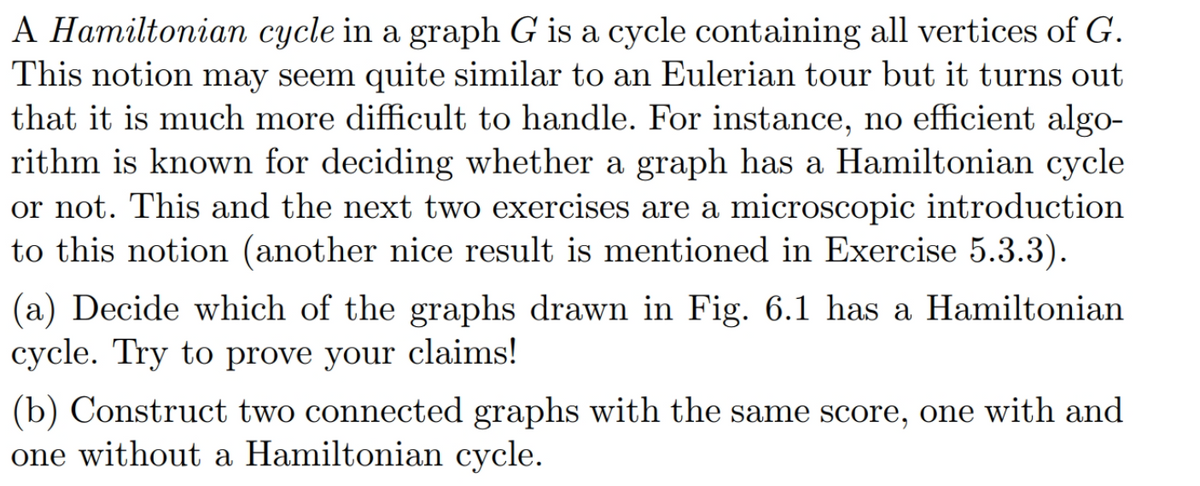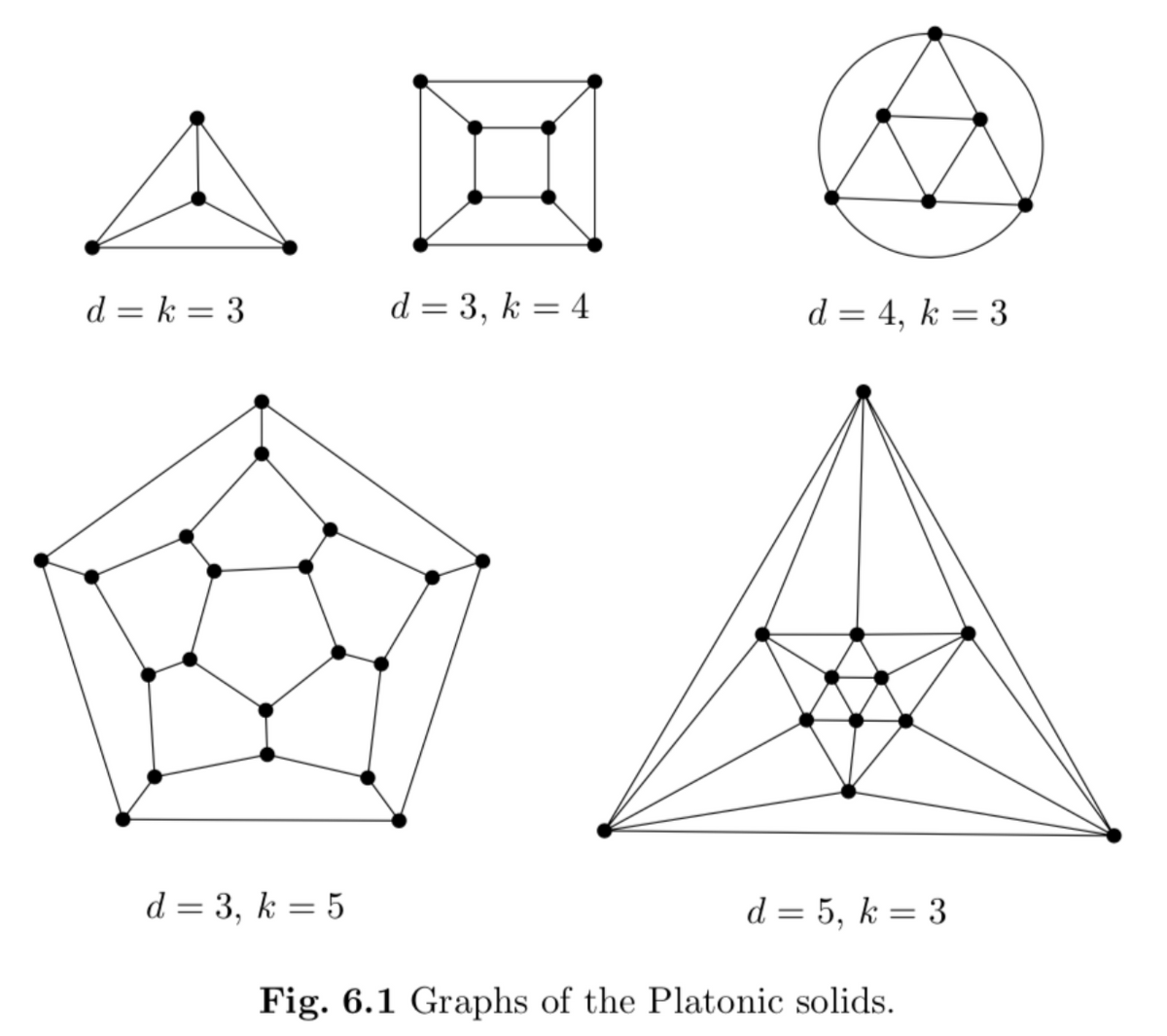A Hamiltonian cycle in a graph G is a cycle containing all vertices of G. This notion may seem quite similar to an Eulerian tour but it turns out that it is much more difficult to handle. For instance, no efficient algo- rithm is known for deciding whether a graph has a Hamiltonian cycle or not. This and the next two exercises are a microscopic introduction to this notion (another nice result is mentioned in Exercise 5.3.3). (a) Decide which of the graphs drawn in Fig. 6.1 has a Hamiltonian cycle. Try to prove your claims! (b) Construct two connected graphs with the same score, one with and one without a Hamiltonian cycle.
A Hamiltonian cycle in a graph G is a cycle containing all vertices of G. This notion may seem quite similar to an Eulerian tour but it turns out that it is much more difficult to handle. For instance, no efficient algo- rithm is known for deciding whether a graph has a Hamiltonian cycle or not. This and the next two exercises are a microscopic introduction to this notion (another nice result is mentioned in Exercise 5.3.3). (a) Decide which of the graphs drawn in Fig. 6.1 has a Hamiltonian cycle. Try to prove your claims! (b) Construct two connected graphs with the same score, one with and one without a Hamiltonian cycle.
Linear Algebra: A Modern Introduction
4th Edition
ISBN:9781285463247
Author:David Poole
Publisher:David Poole
Chapter3: Matrices
Section3.7: Applications
Problem 74EQ
Related questions
Question

Transcribed Image Text:A Hamiltonian cycle in a graph G is a cycle containing all vertices of G.
This notion may seem quite similar to an Eulerian tour but it turns out
that it is much more difficult to handle. For instance, no efficient algo-
rithm is known for deciding whether a graph has a Hamiltonian cycle
or not. This and the next two exercises are a microscopic introduction
to this notion (another nice result is mentioned in Exercise 5.3.3).
(a) Decide which of the graphs drawn in Fig. 6.1 has a Hamiltonian
cycle. Try to prove your claims!
(b) Construct two connected graphs with the same score, one with and
one without a Hamiltonian cycle.

Transcribed Image Text:d=k=3
d = 3, k = 4
B
d = 3, k = 5
d = 4, k = 3
d = 5, k = 3
Fig. 6.1 Graphs of the Platonic solids.
Expert Solution
This question has been solved!
Explore an expertly crafted, step-by-step solution for a thorough understanding of key concepts.
This is a popular solution!
Trending now
This is a popular solution!
Step by step
Solved in 4 steps with 4 images

Recommended textbooks for you

Linear Algebra: A Modern Introduction
Algebra
ISBN:
9781285463247
Author:
David Poole
Publisher:
Cengage Learning

Linear Algebra: A Modern Introduction
Algebra
ISBN:
9781285463247
Author:
David Poole
Publisher:
Cengage Learning